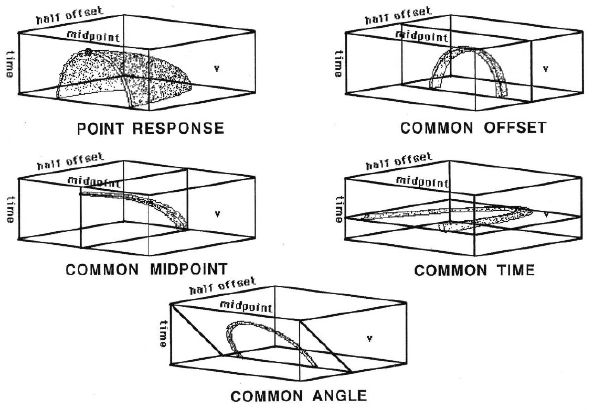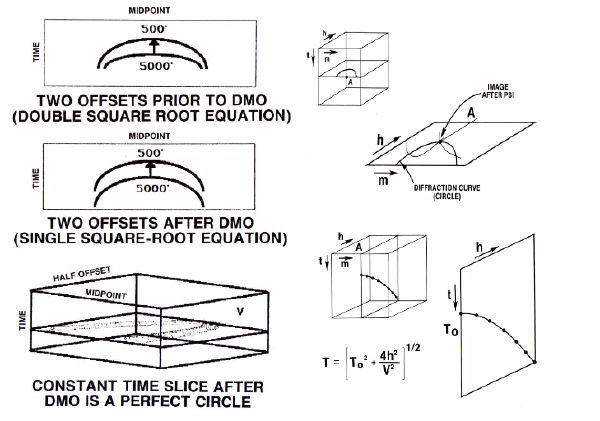Velocity Independent Migration Velocity Analysis
Another early approach to PSTM velocity analysis is illustrated in Figure 4. The important issue with regard to Figure 4 is that we can apply this migration algorithm without knowledge of the velocity. Once applied, a detailed analysis can then be performed to determine the velocity that best flattens the gathers and produces the best image. It is very important to note that this approach produces velocities that are obtained at the migrated positions. Thus, the requirement of Figure 1 is met: The velocity is at the migrated or vertical position where it is actually needed.
There are many variations of this approach. One, due to John C. Bancroft at the University of Calgary and his colleagues, is called Equivalent Offset Migration, but, except for the fact that it is not velocity independent, it is essentially equivalent to what is described here.
Because this so-called velocity-independent approach is predicated on a constant velocity assumption, it and the Fowler method are to a large extent identical in the kinds of velocity models they produce. They are easily extended to 3D and can form the basis for automatic estimation of initial velocity fields, but they are for the most part PSTM methodologies. As we will see, the semblance-based approach in item 2 on page 916 has a natural extension to depth migration based migration velocity analysis (MVA) methods.
- Introduction
- Seismic Modeling
- History
- Zero Offset Migration Algorithms
- Exploding Reflector Examples
- Prestack Migration
- Prestack Migration Examples
- Data Acquisition
- Migration Summary
- Isotropic Velocity Analysis
- Migration Velocity Analysis Geometry
- Constant Velocity Migration Velocity Analysis
- Velocity Independent Migration Velocity Analysis
- Migrated Common Image Gathers
- Semblance-Based Isotropic MVA on CIGs, CAGs, and SMIGs
- Painless (No Horizons) Velocity Model Construction
- Horizon-Based Velocity Analysis
- Residual Tomography
- SEG AA' Case Study
- Marmousi Case Study
- Anisotropic Velocity Analysis
- Case Studies
- Course Summary


